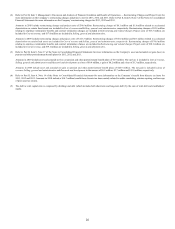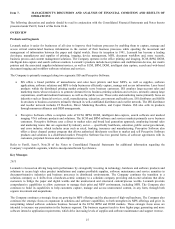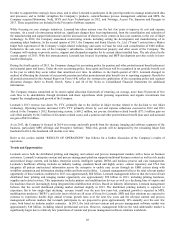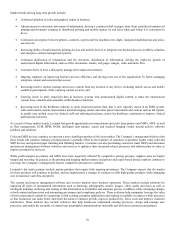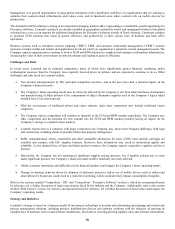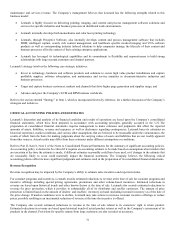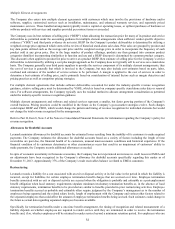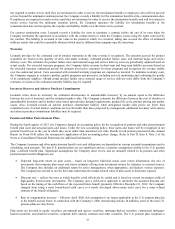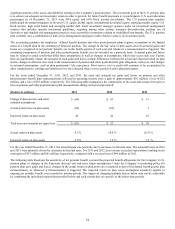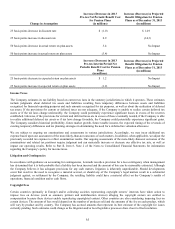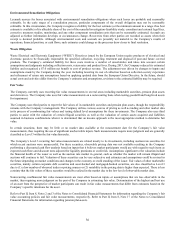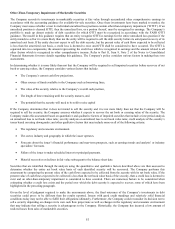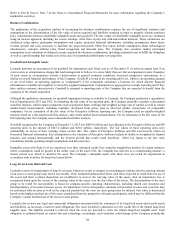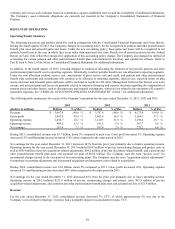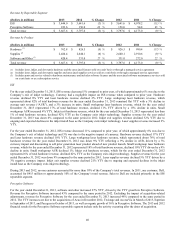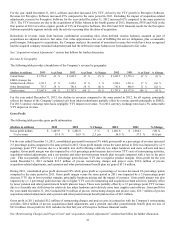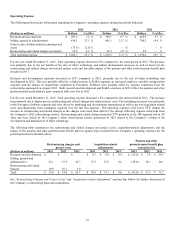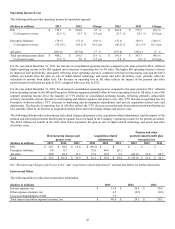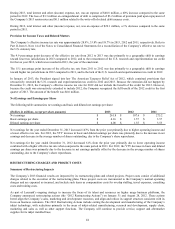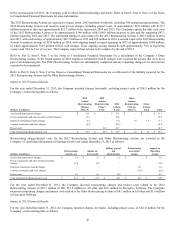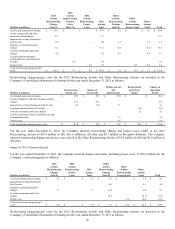Lexmark 2013 Annual Report Download - page 40
Download and view the complete annual report
Please find page 40 of the 2013 Lexmark annual report below. You can navigate through the pages in the report by either clicking on the pages listed below, or by using the keyword search tool below to find specific information within the annual report.
36
Environmental Remediation Obligations
Lexmark accrues for losses associated with environmental remediation obligations when such losses are probable and reasonably
estimable. In the early stages of a remediation process, particular components of the overall obligation may not be reasonably
estimable. In this circumstance, the Company recognizes a liability for the best estimate (or the minimum amount in a range if no best
estimate is available) of its allocable share of the cost of the remedial investigation-feasibility study, consultant and external legal fees,
corrective measures studies, monitoring, and any other component remediation costs that can be reasonably estimated. Accruals are
adjusted as further information develops or circumstances change. Recoveries from other parties are recorded as assets when their
receipt is deemed probable. Although environmental costs and accruals are presently not material to the Company’s results of
operations, financial position, or cash flows, such estimates could change as the processes draw closer to final resolution.
Waste Obligation
Waste Electrical and Electronic Equipment (“WEEE”) Directives issued by the European Union require producers of electrical and
electronic goods to be financially responsible for specified collection, recycling, treatment and disposal of past and future covered
products. The Company’s estimated liability for these costs involves a number of uncertainties and takes into account certain
assumptions and judgments including collection costs, return rates and product lives. During 2013, the Company reduced its estimated
liability and recognized a $7.0 million net benefit to cost of product revenue. The adjustment was driven by changes to inputs and
assumptions made by the Company during the year, including lowering its cost of collection based on collection society experience
and refinement of return rate assumptions based on applying updated data from the European Union Directive. In the future, should
actual costs and activities differ from the Company’s estimates and assumptions, revisions to the estimated liability may be required.
Fair Value
The Company currently uses recurring fair value measurements in several areas including marketable securities, pension plan assets
and derivatives. The Company also uses fair value measurements on a nonrecurring basis when testing goodwill and long-lived assets
for impairment.
The Company uses third parties to report the fair values of its marketable securities and pension plan assets, though the responsibility
remains with the Company’s management. The Company utilizes various sources of pricing as well as trading and other market data
in its process of corroborating fair values and testing default level assumptions for these investments. The Company also uses third
parties to assist with the valuation of certain illiquid securities as well as the valuation of certain assets acquired and liabilities
assumed in business combinations when it is determined that an income approach is the most appropriate method to determine fair
value.
In certain situations, there may be little or no market data available at the measurement date for the Company’s fair value
measurements, thus requiring the use of significant unobservable inputs. Such measurements require more judgment and are generally
classified as Level 3 within the fair value hierarchy.
The Company’s Level 3 recurring fair value measurements are related mostly to its investments, including auction rate securities for
which recent auctions were unsuccessful. For these securities, observable pricing data was not available resulting in the Company
performing a discounted cash flow analysis based on inputs that it believes market participants would use with regard to such items as
expected cash flows and discount rates adjusted for liquidity premiums or credit risk. Assumptions significant to the valuation include
the financial health of the issuer as well as the auction rate market in general, such as whether the market will remain illiquid and
auctions will continue to fail. Valuation of these securities can be very subjective and estimates and assumptions could be revised in
the future depending on market conditions and changes in the economy or credit standing of the issuer. Fair values of other marketable
securities, mainly certain corporate debt securities and asset-backed and mortgaged-backed securities, are also classified as Level 3
due to (1) a low number of observed trades or pricing sources or (2) variability in the pricing data is higher than expected. There is less
certainty that the fair values of these securities would be realized in the market due to the low level of observable market data.
Nonrecurring, nonfinancial fair value measurements are most often based on inputs or assumptions that are less observable in the
market, thus requiring more judgment on the part of the Company in estimating fair value. Determination of the highest and best use
of an asset from the perspective of market participants can result in fair value measurements that differ from estimates based on the
Company’s specific intentions for the asset.
Refer to Part II, Item 8, Notes 2 and 3 of the Notes to Consolidated Financial Statements for information regarding the Company’s fair
value accounting policies and fair value measurements, respectively. Refer to Part II, Item 8, Note 17 of the Notes to Consolidated
Financial Statements for information regarding pension plan assets.
36


